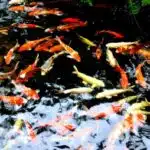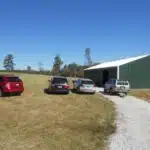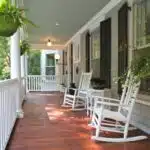Outdoor waterfalls are popular additions to gardens and landscapes, offering the soothing sound of water flowing, visual interest, and a habitat for aquatic plants and animals. However, many people may feel intimidated by the cost of building a waterfall, assuming that it requires expensive materials and professional installation. Fortunately, with some creativity and resourcefulness, it is possible to build a beautiful outdoor waterfall inexpensively.
In this article, we will explore how to build outdoor waterfalls on a budget without compromising on quality or aesthetics. From selecting the right location for your waterfall to choosing affordable materials and designing a naturalistic layout, we will provide you with practical tips and techniques for creating an eye-catching and relaxing oasis in your backyard. Whether you are an experienced landscaper or just starting out in garden design, our guide can help you achieve your vision of an affordable yet stunning outdoor waterfall.
Choosing The Right Location For Your Waterfall
Choosing the right location is crucial when building an outdoor waterfall. Best practices recommend that you avoid placing your waterfall in areas with too much sunlight or too much shade. Too much sunlight can cause algae growth and lead to the water turning green, while too much shade can prevent plants from growing around your waterfall and also limit its aesthetic appeal. To obtain optimal results, it is best to locate your waterfall in an area with partial sun exposure.
Another mistake to avoid when selecting a location for your outdoor waterfall is placing it close to any trees, as their roots can interfere with the plumbing system and damage the structure of the waterfall over time. It is also important to avoid locations near electrical sources such as power lines or outlets, which could pose serious safety hazards.
Additionally, consider the terrain of where you want to build your waterfall. A flat surface may not allow for proper drainage or create an illusion that the water is stagnant, which could deter from its overall effect. Instead, choose a location with natural slopes and varying elevations for optimal water flow and an aesthetically pleasing design. By selecting a suitable location for your outdoor waterfall, you can ensure that it functions effectively and complements your garden’s overall landscaping scheme.
To plan your waterfall design effectively, there are several factors to consider before breaking ground on your project.
Planning Your Waterfall Design
Proper planning is crucial for building a beautiful outdoor waterfall. Before you start, determine the location and size of your waterfall, as well as your budget. This will help you choose the right materials and design inspiration that fit your style and preferences.
Waterfall materials can vary depending on the size, location, and style of your project. Natural stone is a popular choice for its durability and aesthetic appeal. However, precast concrete or fiberglass may be more cost-effective options. Your chosen material will also influence the type of pump required to circulate water through your waterfall.
Design inspiration can come from various sources such as nature, architecture, or personal preference. Research different styles and themes to create a unique look for your waterfall. Incorporating elements like plants, rocks, or lighting can enhance the overall ambiance of your outdoor space. Remember to consider factors like sunlight exposure and surrounding landscape when choosing your design.
As you plan your waterfall design, remember to take into account both practical and aesthetic considerations. With careful thought and research, you can create a stunning feature in your yard that brings joy and tranquility to all those who visit. Next up is measuring and marking your site to ensure proper placement of the components needed for constructing an inexpensive outdoor waterfall.
Measuring And Marking Your Site
Site preparation is crucial in building an outdoor waterfall. Before starting the project, make sure to check the area and mark where you want to place your waterfall. Choose a spot that has enough space for the size of the waterfall you plan to build. Once you have decided on a location, clear out any debris or vegetation that may hinder your work. It is also essential to determine how much water will be needed for your waterfall and ensure that access to a water source is available.
An equipment checklist is necessary before beginning any construction work on your outdoor waterfall. Some of the tools required include shovels, rakes, measuring tape, a level, and wheelbarrows. A power drill may also come in handy when installing pipes or pumps. Make sure all equipment is in good working condition before starting the project. Additionally, it may be helpful to have someone assist you with the excavation process.
Marking your site and preparing necessary equipment are vital aspects of building an outdoor waterfall inexpensively. With proper planning and attention to detail, these steps can help ensure a smooth construction process from start to finish. The next step after site preparation is excavating your waterfall area by digging out the marked space and creating a foundation for your design.
Excavating Your Waterfall Area
Moving forward, our next step is to begin budgeting excavation and gathering the essential equipment needed for creating a stunning outdoor waterfall at an affordable cost. Excavation can be a time-consuming task, but with careful planning and preparation, it can be done easily and economically. The first thing to consider when budgeting excavation is the size of your waterfall. Larger waterfalls will require more excavation work and thus higher costs.
In addition to budgeting, it’s important to gather all the necessary equipment before starting your excavation. Essential equipment includes shovels, picks, and wheelbarrows for moving dirt and rocks. A level will also be needed to ensure that your waterfall has a sturdy base. Additionally, you may want to invest in a measuring tape or laser level for precise measurements during excavation.
Creating a sturdy base for your waterfall is crucial to ensuring its longevity and stability. This involves digging deep enough into the ground to create a solid foundation for your waterfall structure. It’s important to keep in mind that the depth of excavation will depend on the height of your waterfall, so take measurements carefully before beginning excavation. Once you have reached the desired depth, fill in any gaps with gravel or sand before compacting it down firmly with a tamper tool. By taking these steps towards creating a strong foundation, you can ensure that your outdoor waterfall will not only look beautiful but remain functional for years to come.
Creating A Sturdy Base For Your Waterfall
A sturdy base is essential for any outdoor waterfall. Not only does it provide a stable foundation, but it also ensures that the water flows smoothly and evenly. To create a sturdy base, you will need to follow a few key steps.
First, choose the location for your waterfall carefully. Look for a spot that is level and has good drainage. Avoid areas with loose soil or steep inclines as these can cause instability over time.
Next, prepare the ground by digging out the area where your waterfall will be located. Remove any rocks, roots or debris from the soil and ensure that the ground is level using a spirit level.
Once you have prepared the ground, you can start building your base using alternative materials such as bricks or concrete blocks. These materials are affordable and easy to use, and they provide a solid foundation for your waterfall. Be sure to waterproof your base using one of the many waterproofing options available on the market today.
- Use cinder blocks or bricks to build up the sides of your waterfall.
- Consider adding reinforcement wire mesh into each layer of brickwork to increase stability.
- Apply a layer of waterproof sealant to prevent water from seeping through.
- Add a layer of sand or gravel on top of your base to aid in drainage.
- Compact the sand or gravel layer down with a tamper tool before proceeding with further construction.
By following these steps, you can create a sturdy and reliable base for your outdoor waterfall without breaking the bank. With proper preparation and attention to detail, your waterfall will last for years to come. In our next section, we’ll discuss how to line your waterfall with pond liner for added protection against leaks and other common issues.
Lining Your Waterfall With Pond Liner
A waterfall can add a serene and tranquil touch to any outdoor space. However, the key to creating a successful waterfall is to ensure that it has a durable and effective lining. The pond liner is the foundation of your waterfall, so it’s essential to choose the right type of liner for your project.
There are various types of pond liners available in the market, such as PVC, EPDM, and Butyl rubber. PVC liners are inexpensive and easy to install but have a shorter lifespan than other materials. EPDM liners are thicker and more durable but require professional installation. Butyl rubber liners are exceptionally long-lasting but come with a higher price tag.
Each type of pond liner has its advantages and drawbacks. When selecting a liner for your waterfall, consider factors such as cost, durability, ease of installation, and overall aesthetic appeal. It’s crucial to weigh these factors before making your final decision.
Choosing the right pond liner for your waterfall is essential for ensuring that it lasts for years to come. By taking into account the pros and cons of each material, you can make an informed decision that will result in a beautiful and long-lasting addition to your outdoor space. In the next section, we will discuss how to install a water pump and tubing to complete your waterfall project seamlessly.
Installing A Water Pump And Tubing
Installing a Water Pump and Tubing is an essential step in building an outdoor waterfall. It is important to choose the right size of water pump for optimal water flow. For a small waterfall, a 200-gallon-per-hour (GPH) pump may suffice, while larger waterfalls will require pumps with higher GPH ratings.
In addition to the pump, tubing is necessary to connect the water source to the waterfall. Flexible tubing made of PVC or rubber is commonly used for this purpose. It is important to measure the length required carefully and purchase tubing that fits snugly onto the pump and waterfall outlets.
Decorative elements can also be incorporated into the tubing design by using materials such as river rocks or shells to cover sections of exposed tubing. This will help blend the tubing into its surroundings and create a more natural look for your outdoor waterfall.
Moving on to choosing rocks and boulders for your waterfall, it is important to consider their size and placement carefully. Small rocks should be placed at the base of the waterfall to create a natural-looking pool, while larger boulders can be strategically placed along the sides and top of the waterfall to enhance its visual appeal. By following these guidelines, you can achieve a beautiful and inexpensive outdoor waterfall that enhances your garden’s aesthetic appeal.
Choosing Rocks And Boulders For Your Waterfall
After installing the water pump and tubing, the next step is to choose rocks and boulders for your waterfall. Rock selection is crucial in creating a natural-looking waterfall while ensuring its durability. The type of rock you select should complement the existing landscape and help create a cohesive design.
When selecting rocks, consider their size, shape, texture, and color. Large boulders are ideal for creating a focal point and adding drama to your waterfall. Smaller rocks can be used to fill gaps between larger boulders and create a more natural-looking cascade. It’s essential to choose rocks of varying sizes to add depth to your waterfall’s aesthetic placement.
Once you’ve selected the right rocks for your waterfall, it’s time to start placing them. Aesthetic placement is key in achieving a natural-looking waterfall that blends seamlessly with its surroundings. Place the larger boulders first, using them as anchors for the smaller rocks. Ensure that each rock is securely placed, so they don’t shift or move when water flows over them. With careful consideration of rock selection and aesthetic placement, you can create an outdoor oasis that will provide relaxation and enjoyment for years to come.
Transitioning into the subsequent section about placing rocks and boulders in your waterfall: Now that we have discussed how to select the right rocks for your waterfall let’s move on to placing them in a way that enhances its overall look and feel without compromising its structural integrity.
Placing Rocks And Boulders In Your Waterfall
Rock placement is a crucial aspect of building an outdoor waterfall. It can make or break the visual appeal of your water feature. To achieve a natural look, choose rocks that vary in size and shape. Start by placing larger boulders at the base of the waterfall and work your way up with smaller stones.
Rock placement tips include burying one-third of each rock to anchor it in place and prevent shifting over time. Also, avoid stacking rocks too high or too straight, as this can create an unnatural appearance. Instead, aim for a staggered effect that mimics the way rocks are naturally found in nature.
DIY waterfall accents can add interest and character to your design. Consider incorporating driftwood or tree branches into the rock placement to create a more organic look. You could also experiment with different types of stone, such as slate or shale, to add texture and contrast to your waterfall.
Moving on from rock placement, creating cascades and pools in your waterfall is another important step in building an outdoor water feature. With careful planning and attention to detail, you can create a beautiful and functional oasis that will provide years of enjoyment for you and your guests.
Creating Cascades And Pools In Your Waterfall
After placing rocks and boulders in your waterfall, the next step is to create natural looking cascades. Cascades are the heart of any waterfall and they bring a sense of tranquility to your outdoor space. The key to creating beautiful cascades is to use a variety of rock sizes and shapes. This will help you achieve a more natural look that mimics the flow of water in nature.
Incorporating fish into your waterfall can also add an extra dimension of beauty and interest. Koi fish are often used in outdoor waterfalls because they are easy to care for and come in a variety of colors. When adding fish, it’s important to make sure the water is clean and well-oxygenated. You should also choose plants that provide shade for the fish during the hottest parts of the day.
Once you have created cascades and incorporated fish into your waterfall, you can enhance its beauty by adding plants and lighting. Plants such as ferns, hostas, and mosses can be used to soften the edges of rocks, while colorful flowers like irises or lilies can add pops of color. Lighting can also be added to highlight certain features or create a dramatic effect at night. With careful planning and execution, these elements can transform your outdoor space into a peaceful oasis where you can relax and unwind after a long day.
To continue enhancing your waterfall, adding plants and lighting is crucial. By choosing plants that complement the natural surroundings, you can create an even more harmonious environment for both yourself and any guests who visit your property. Additionally, incorporating lighting into your waterfall design allows you to enjoy its beauty even after dark, making it an ideal feature for nighttime gatherings or quiet moments spent alone with nature.
Adding Plants And Lighting To Your Waterfall
Enhancing the beauty of your outdoor waterfall can be achieved by adding plants and lighting. Adding greenery around the waterfall will make it look more natural and can help purify the water. Consider planting aquatic plants such as water lilies, lotus, or cattails around your waterfall to add a touch of color and texture. You can also plant ferns, hostas, or other shade-loving plants nearby to provide contrast.
Incorporating lighting into your waterfall will not only enhance its appearance but also create a relaxing ambiance in your outdoor space. LED lights are energy-efficient and come in various colors that can complement your garden’s theme. Installing lights under the water will create an illuminating effect that adds depth to the waterfall at night. You may also consider placing lights around the perimeter of the waterfall to highlight its contours.
Adding fish to your outdoor pond or waterfall is another way to bring life to your water feature while also keeping it clean. Fish like koi or goldfish are low-maintenance and come in various colors that can add vibrancy to your outdoor space. However, make sure you adjust the water flow in your waterfall accordingly as fish require oxygen-rich water for survival.
To ensure longevity for your outdoor waterfall, regular maintenance is crucial. This includes cleaning debris out of the pond or basin, checking for leaks, and inspecting pumps and filters regularly. Additionally, monitoring pH levels and adjusting them if necessary is important for maintaining healthy aquatic life in your pond or waterfall. By taking these steps, you can enjoy the serenity and beauty of your outdoor waterfall for years to come.
Maintaining Your Waterfall For Longevity
To ensure that your outdoor waterfall lasts for years to come, proper maintenance is crucial. One of the most important factors to consider when maintaining your waterfall is water quality. Poor water quality can lead to a buildup of harmful bacteria and algae, which can be detrimental to the aquatic life in your pond and negatively impact the overall aesthetics of your waterfall.
To maintain good water quality, it’s essential to regularly test the pH levels of your water and adjust them as necessary. Additionally, investing in a good quality filtration system can help keep debris and other contaminants out of your water. A well-maintained filtration system will not only improve water quality but also reduce the frequency of cleaning required.
Another key aspect of maintaining your outdoor waterfall is algae prevention. Algae buildup can quickly become a problem if left unchecked, resulting in unsightly green growth on rocks and other surfaces surrounding your waterfall. To prevent this, adding beneficial bacteria or using an algaecide treatment can help inhibit algae growth while still maintaining healthy aquatic life in your pond.
Transition: Now that you understand how to maintain proper water quality and prevent algae buildup in your outdoor waterfall, let’s explore some common issues you may encounter and ways to troubleshoot them effectively.
Next section topic: Troubleshooting Common Waterfall Issues .
Troubleshooting Common Waterfall Issues
To ensure the longevity of your outdoor waterfall, regular maintenance is necessary. However, despite your best efforts, issues may still arise. It’s important to be aware of these common issues and their potential solutions so that you can address them promptly.
One common issue with outdoor waterfalls is algae buildup. This can occur when there is excess sunlight or nutrients in the water, or if the water is not circulating properly. To combat this issue, try adding plants to your waterfall that will absorb excess nutrients, such as water lilies or submerged oxygenators. Alternatively, a UV clarifier can be installed to prevent algae growth by sterilizing the water.
Another issue that may arise is leaks in the waterfall structure. These can be caused by shifts in soil or damage from weather conditions. If you suspect a leak, check all visible connections and inspect the surrounding area for any signs of dampness or pooling water. Common solutions include patching leaks with waterproof sealant or adding a liner to prevent further leaks.
When it comes to building an outdoor waterfall inexpensively, DIY fixes are key. By addressing common issues yourself and making small adjustments along the way, you can save money on repairs and keep your waterfall running smoothly for years to come. In the next section, we will explore ways to enhance your waterfall with accessories that won’t break the bank.
Enhancing Your Waterfall With Accessories
A waterfall can add a touch of natural beauty to your backyard. However, adding accessories can enhance the experience and make it even more attractive. One such accessory is waterfall lighting. With the right lighting, you can create a breathtaking scene at night. The light reflects off the water and creates beautiful patterns that are soothing to watch.
Another accessory that enhances the beauty of your waterfall is fountain accessories. You can add floating fountains, waterfalls with built-in fountains, and other accessories that complement your waterfall’s natural beauty. These accessories create a unique atmosphere that complements your relaxation or entertainment needs.
Adding wind chimes to your outdoor waterfall area can also create a calm and soothing environment while enjoying nature’s beauty. Wind chimes come in various shapes and sizes, and their sounds are soothing to listen to while sitting near the waterfall.
Some additional items you may want to consider:
- Decorative stones or rocks
- Small plants or flowers around the base of the waterfall
- A small seating area near the waterfall
- A bird bath or feeder near the waterfall
- Adding an arbor or pergola for shade
By adding these accessories, you not only enhance your outdoor water feature but also create an oasis in your own backyard. These simple additions will make your outdoor space more inviting and comfortable for you and your guests.
Now that we have discussed enhancing your waterfall with various accessories let us move on to discussing how you can enjoy this beautiful and affordable addition to your home’s exterior without breaking the bank!
Enjoying Your Beautiful And Affordable Outdoor Waterfall
Now that you have successfully built your outdoor waterfall, it’s time to sit back and enjoy its beauty. However, to fully appreciate your creation, you need to take care of it. DIY waterfall maintenance is essential in keeping your water feature looking its best. Regular cleaning of the pump and filter will prevent clogging and ensure that the water flow remains consistent. Furthermore, make sure to remove any debris from the basin and surrounding area to maintain a clean and organized appearance.
Maximizing waterfall aesthetics is another important step in enjoying your outdoor oasis. Consider adding lighting around the waterfall for a dramatic nighttime effect. This will not only enhance the overall ambiance but also provide visibility for evening gatherings or late-night relaxation sessions. Additionally, planting foliage around the waterfall can create a naturalistic environment that complements both the water feature and surrounding landscape.
Incorporating these tips into your outdoor space can create a stunning and affordable oasis that will provide endless enjoyment for years to come. Remember to prioritize DIY waterfall maintenance to keep it functioning at peak performance while maximizing its aesthetic appeal with thoughtful design choices. With proper care and attention, your outdoor waterfall will continue to be a source of tranquility and serenity for you and your loved ones.
Conclusion
Building an outdoor waterfall can be a beautiful and affordable addition to your landscape design. With careful planning, measuring, and excavation, you can create a stunning water feature that will enhance the beauty of your outdoor space. It is important to consider the location of your waterfall, the design you want to achieve, and the necessary maintenance required for its longevity.
Measuring and marking your site is crucial to ensure accurate placement and sizing of your waterfall. Creating a sturdy base for your waterfall is also essential for stability and durability. Troubleshooting common issues such as leaks or algae growth can help maintain the beauty of your waterfall over time. Enhancements such as lighting or aquatic plants can add even more interest to your water feature.
While some may argue that building an outdoor waterfall requires significant time and effort, the end result is a breathtaking addition to any landscape. The benefits of incorporating nature into our living spaces are numerous; from reducing stress levels to increasing property values, outdoor waterfalls offer both aesthetic appeal and health benefits. By following these simple steps and taking pride in creating a unique feature for your home, you can enjoy the beauty of an affordable outdoor waterfall for years to come.
Image Credits
- “1938 Plymouth P5 Buisness Sedan” by Sicnag (featured)


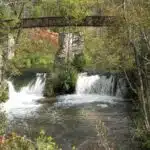


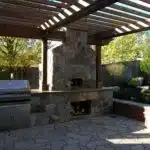


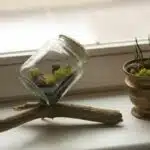
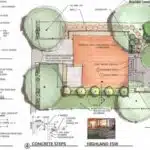
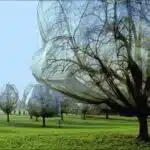
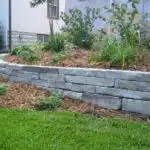


![How To Build A Detached Deck 15 Force Reconnaissance Detachment Deck Shoot [Image 4 of 4]](https://green-life.blog/wp-content/uploads/2023/05/RJo3tlizSGjq-150x150.jpg.webp)

